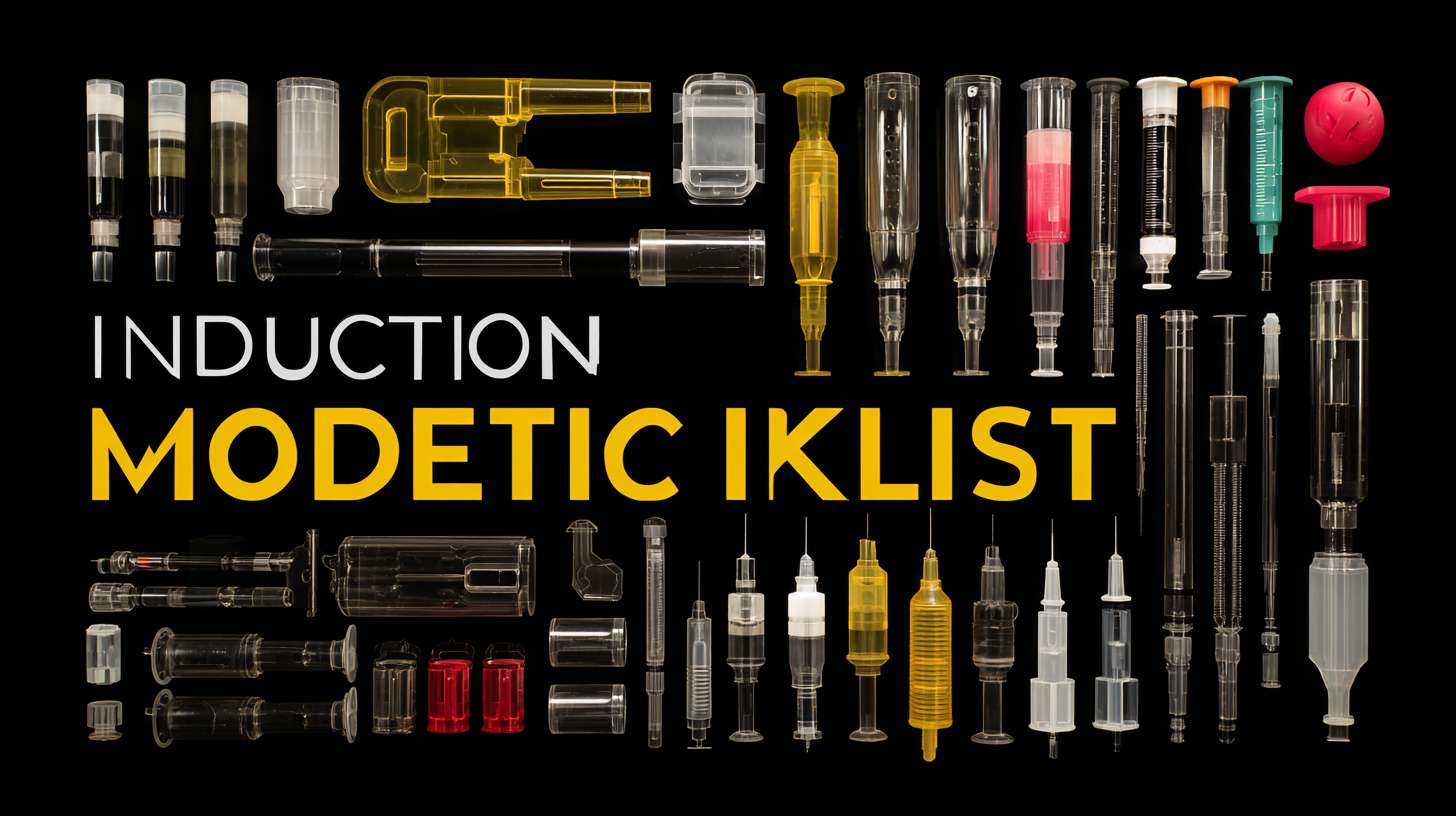


Injection molding is a crucial manufacturing process that allows for high precision and efficiency in producing plastic components. However, achieving the best results in injection molding requires a deep understanding of various technical parameters and the consistent application of best practices. In this comprehensive blog, we present the ultimate checklist designed to guide you through every critical aspect of the injection molding process. From selecting the right materials to optimizing machine settings, each element plays a significant role in the final quality of the product. Our focus will not only delve into the detailed technical specifications but also incorporate data-driven insights to help you make informed decisions. Whether you are a seasoned engineer or a newcomer to the field, this guide aims to elevate your injection molding capabilities, ensuring that you can produce top-tier components that meet demanding industry standards.

Achieving precision in injection molding is crucial for producing high-quality components. To optimize results, several key parameters must be meticulously managed. First and foremost, the temperature settings of the nozzle and mold play a critical role. Proper temperature control helps ensure consistent material flow and adequate cooling, preventing defects such as warping or voids. Monitoring the melt temperature is essential as it directly affects the viscosity of the plastic, influencing the filling and packing phases of the cycle.
Another vital parameter to consider is injection speed. The rate at which material is injected into the mold impacts the overall filling and can affect the final product's surface finish and mechanical properties. A well-optimized injection speed minimizes shear stress on the material, reducing the likelihood of degradation while ensuring that the mold is filled uniformly. Finally, controlling the cycle time is equally important; too short a cycle may lead to incomplete filling, whereas excessively long cycles can cause overheating or material degradation. Balancing all these parameters is key to achieving optimal precision in injection molding and delivering high-quality results consistently.
Maintaining critical equipment is essential for achieving flawless production in injection molding. First and foremost, regular inspection of the injection molding machine itself is vital. This includes checking the hydraulic system for leaks, ensuring the temperature control systems are functioning optimally, and verifying that all sensors and actuators are calibrated correctly. A well-maintained machine not only enhances efficiency but also reduces downtime, leading to more consistent production practices.
Moreover, attention should also be given to the molds used in the injection process. Regular cleaning and maintenance of the molds can prevent issues such as wear and tear, which can affect product quality. Implementing a routine schedule for mold maintenance allows for early detection of potential problems, thereby minimizing costly repairs. Additionally, lubricating the moving parts of the molds and ensuring they are free from debris can ensure that they perform at their best, reducing cycle times and enhancing the overall production output.
Lastly, don't overlook the significance of training operators on the best maintenance practices. A knowledgeable team can identify maintenance needs before they escalate into significant issues, ensuring that the production process remains seamless. Investing in the right tools for equipment check-ups and providing regular training sessions fosters a culture of accountability and proactivity within the production team, ultimately leading to superior molding results.
| Maintenance Task | Frequency | Description | Impact on Production |
|---|---|---|---|
| Clean Injection Nozzle | Weekly | Remove any material buildup or blockages. | Prevents defects and ensures consistent flow. |
| Check Cooling System | Monthly | Inspect coolant levels and flow rates. | Maintains optimal cycle times and product quality. |
| Inspect Molds | Every Production Cycle | Check for wear, damage, or misalignment. | Avoids production delays and maintains product precision. |
| Lubricate Moving Parts | Monthly | Apply lubricant to all moving components. | Reduces friction and wear, enhancing machine longevity. |
| Calibrate Thermoregulators | Quarterly | Ensure temperature settings are accurate. | Critical for maintaining material properties and part integrity. |
When it comes to achieving optimal results in injection molding, the selection of material is paramount. According to a report by the Plastics Industry Association, nearly 70% of manufacturers cite material choice as a critical factor influencing the performance and quality of molded parts. Selecting the right polymer not only enhances mechanical properties but also impacts cycle time, production costs, and waste reduction. For instance, polypropylene (PP) is favored for its excellent fatigue resistance and low density, making it suitable for applications requiring lightweight components, whereas engineering thermoplastics like polycarbonate (PC) are chosen for their superior impact resistance and clarity, crucial in automotive and medical device applications.
Furthermore, understanding the processing characteristics of different materials can lead to significant improvements in manufacturing efficiency. The Polymer Processing Society reported that optimized processing parameters, such as barrel temperature and injection speed, can improve not only the surface finish but also the dimensional accuracy of the final product. By carefully evaluating factors such as thermal stability, flow behavior, and shrinkage rates of various resins, manufacturers can minimize defects and maximize yield. Ultimately, an informed material selection process lays the foundation for achieving the best outcomes in injection molding.

Injection molding is a widely-used manufacturing process that can sometimes encounter various issues, hindering the quality of the end product. Understanding effective troubleshooting techniques is key to overcoming these challenges. According to a recent report by the Plastics Industry Association, about 30% of injection molding defects are attributed to process parameters such as temperature, pressure, and cycle time. Addressing these elements can significantly minimize defects like warping and short shots.
One critical tip for troubleshooting common injection molding problems is to regularly monitor mold temperatures. Consistent temperature control can prevent issues such as uneven cooling, which often leads to dimensional inaccuracies. Implementing a real-time temperature monitoring system can ensure that fluctuations are detected early, allowing for swift adjustments.
Another essential practice is conducting regular maintenance on injection molding machines. A study from a leading manufacturing consultancy revealed that proper maintenance can reduce machine downtime by up to 40%. This not only ensures consistent operation but also prolongs the lifespan of equipment. By scheduling routine checks on critical components like injection units and hydraulic systems, manufacturers can avoid unexpected failures and maintain optimal performance.

When it comes to injection molding, ensuring quality control and consistency is crucial for producing high-quality products. One of the best practices is establishing stringent quality checkpoints throughout the production process. Regularly monitoring key parameters such as temperature, pressure, and cycle time not only helps in identifying deviations early but also allows for immediate corrective actions. Utilizing advanced technologies like real-time data analytics can significantly enhance the ability to track these metrics, ensuring that the molding process stays within specified tolerances.
Another essential practice is to maintain a well-documented standard operating procedure (SOP) that all team members can refer to. This documentation should include detailed instructions for setup, operation, and maintenance of machines, as well as guidelines for material handling and processing. Training staff on these protocols ensures that everyone is aligned on best practices, reducing the likelihood of human error. Moreover, implementing routine equipment calibration and maintenance schedules will prolong machine life and improve the reliability of production outputs, ultimately leading to more consistent and superior molding results.